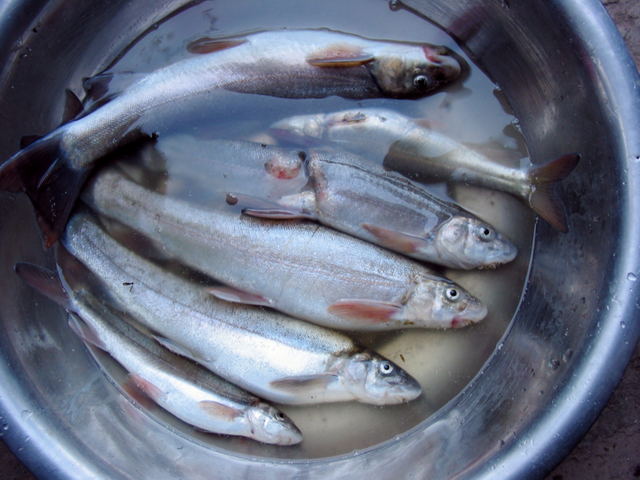
The Nepali "asala" fish, commonly known as the Himalayan trout, is a highly prized species in Nepal. Scientifically referred to as Schizothorax, this fish is native to the cold, fast-flowing rivers and streams of the Himalayan region. The asala is known for its distinctive taste and nutritional value, making it a popular choice among local communities and a sought-after catch for anglers.
Habitat and Distribution
Asala are typically found in the high-altitude rivers and lakes of Nepal, thriving in clear, oxygen-rich waters. These fish prefer cold environments and are usually located at elevations ranging from 2,000 to 4,000 meters. Key rivers such as the Kali Gandaki, Trishuli, and Koshi, along with various glacial lakes, provide ideal habitats for the asala.
Physical Characteristics
The asala fish exhibits a streamlined body adapted for swimming against strong currents. It has a silvery body with a slightly darker back, often featuring a series of small spots. These physical traits help the asala camouflage within its rocky riverbed environment.
Cultural and Economic Importance
In Nepal, the asala fish holds significant cultural and economic value. It is a staple in local diets, especially in highland communities where it serves as a primary source of protein. Additionally, the fish is central to various cultural practices and festivals.
Economically, asala fishing supports local livelihoods. Sustainable fishing practices and community-based conservation efforts are crucial for maintaining the population of this species. Ecotourism, including sport fishing, has also emerged as a growing industry, attracting tourists to the pristine waters of Nepal's Himalayas.
Conservation Concerns
The asala fish faces several threats due to environmental changes and human activities. Habitat degradation from deforestation, pollution, and dam construction disrupts the natural flow of rivers, affecting the breeding grounds and overall health of the fish population. Climate change poses another significant threat by altering water temperatures and flow patterns.
Efforts to conserve the asala include establishing protected areas, enforcing fishing regulations, and promoting sustainable practices among local communities. Research and monitoring are essential to understanding the impacts of these threats and developing effective conservation strategies.
Conclusion
The Nepali asala fish is not just a culinary delicacy but also a vital component of the Himalayan ecosystem and local culture. Its conservation is crucial for maintaining biodiversity and supporting the livelihoods of the people who depend on this remarkable species. Through concerted efforts in sustainable management and environmental protection, the future of the asala can be safeguarded for generations to come.
Congratulations, your post has been upvoted by @upex with a 0.29% upvote. We invite you to continue producing quality content and join our Discord community here. Keep up the good work! #upex
Downvoting a post can decrease pending rewards and make it less visible. Common reasons:
Submit